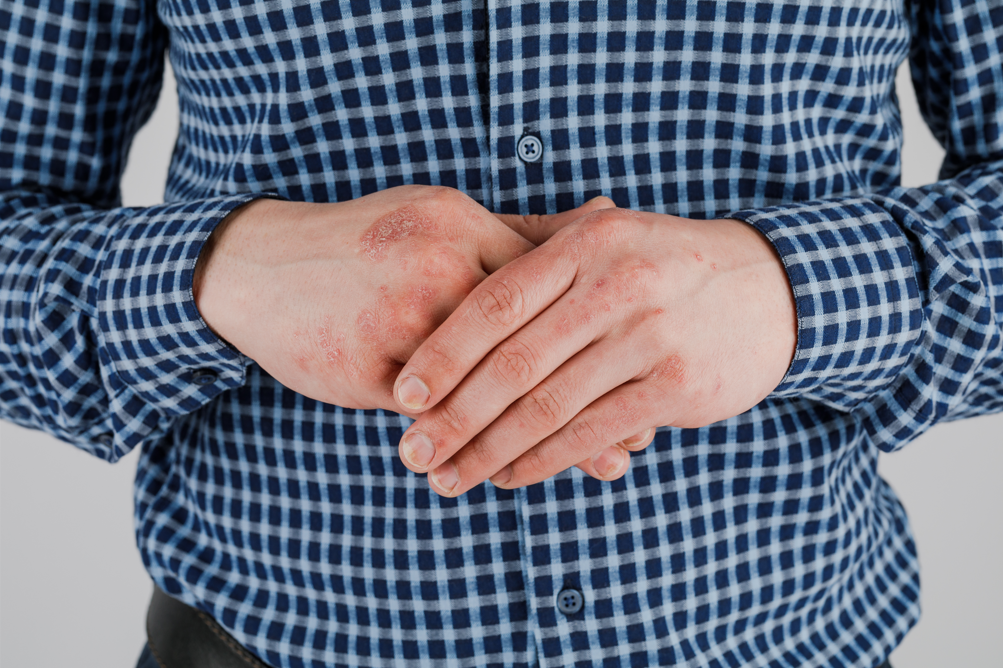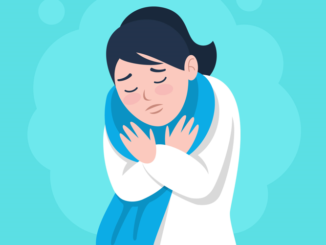
Both bacteria and viruses have been shown to be capable of causing lesions on the hands. Herpes outbreaks on the hands are almost often the result of an illness brought on by the herpes simplex virus (HSV). This is actually a virus that has been linked to the development of both cold sores and genital herpes. Herpes simplex virus types I and II are responsible for the herpetic whitlow infection that can occur on a person’s hands.
It is possible for medical professionals to make an incorrect diagnosis when there are lesions present on the hands. For instance, bacteria are responsible for the majority of bacterial whitlow, but the herpes simplex virus is responsible for herpetic whitlow. Different treatment strategies are required for each of the infections.
According to a case study that was provided by Dr. Peter Gathier, it was found that the majority of whitlow cases are often caused by bacterial infections; but, in some unusual instances, viruses such as herpes may also be involved.
Infections of the whitlow that are brought on by bacteria are frequently very similar to those that result from herpes. For instance, the skin around the infected area of both infections gets red, swells, and becomes warm. This is a common symptom of both infections.
The blisters on an individual’s skin that are caused by herpetic whitlow are filled with a yellow or clear fluid that contains the herpes virus, whereas the sores that are caused by bacterial whitlow are filled with pus. This distinction is what differentiates bacterial whitlow from a herpetic whitlow.
As a result of this, people are strongly urged not to puncture or break the fluid-filled blisters with their hands because doing so can lead to the virus spreading to other parts of the body or even to other people.
The herpes virus has a natural tendency to go away on its own; nevertheless, it can remain latent or hibernate in an individual’s nerve cells, from where it can reactivate in response to a specific stimulus, such as elevated levels of stress or a compromised immune system.
Infections caused by HSV-I most frequently manifest in and around a person’s mouth, lips, face, or nose, whereas HSV-II infections are more frequently found in and around a person’s genital regions.Both kinds of HSV are capable of causing an infection of the hands with herpes.
Herpes infections can happen at any time in a person’s life, regardless of gender or age; however, HSV-I is more prevalent in children and young people.
People who work in professions, such as those that require them to come into close contact with others who already have the infection, may be at a greater risk of developing the infection and the complications associated with it. The HSV-II infection on hands, also known as herpetic whitlow, is caused by the herpes simplex virus type II (HSV-II), mostly affecting the rest of the population, known to spread primarily through sexual contact.
Herpes simplex virus (HSV) causes an infection that is extremely contagious. This means that a person who comes into touch with the blisters or sores of someone who has herpetic whitlow, can spread the virus on to other parts of their own body or to other people.
If a person touches their cold sores or genital herpes sores with their fingers, he or she is increasing the risk of contracting the illness on their hands.

Table of Contents
Risks of Infections
In addition, if you have a compromised immune system, for example if you have diabetes or are undergoing chemotherapy, your likelihood of getting infected with the virus that affects the hands is significantly increased.
Warm and damp environments are ideal breeding grounds for a wide variety of diseases, including viruses and bacteria.
People who are prone to the infection include hairdressers because they come into touch with warm air and wet hair, and medical staff because their hands are encased in warm, damp gloves as they perform their jobs.
Children who suck their thumbs have an increased likelihood of contracting the virus in comparison to other individuals who are not subjected to the same environmental conditions.
People who have the habit of biting their nails are also at an increased risk of contracting the infection because it is spread through the saliva.
When combined with the moist and warm environment of the person’s mouth, the biting generates wounds surrounding the nail, which increases the risk of infection.
Seek quick medical assistance if you have any reason to suspect that you may be suffering with whitlow.
Clinical Features of Herpes on Hands
The hands are most commonly affected by HSV infection, and those affected fall into one of three categories of persons.
The majority of HSV-II infections are found in young people who suffer from a recurring form of the hand infection caused by HSV-II. This group experiences a prodromal phase that lasts for up to 72 hours, followed by a recurrence phase that lasts for seven to ten days and is associated with symptoms such as lymphedema, lymphadenopathy, and lymphangitis. The prodromal phase can last for as long as 72 hours.
It is most common for youngsters who suffer from herpetic stomatitis to also have an HSV infection that affects their hands.
Thirdly, it can also be found in healthcare professionals who become infected while they are providing treatment to patients. Herpes infections on the hands can continue anywhere from 21 to 28 days in healthcare workers, during which time the patient would primarily experience excruciating discomfort and lymphangitis.
It is quite unusual to get relapses of the infection that was caused by HSV-I.
Symptoms of Herpes on Hands
The majority of the symptoms that are related with herpes on the hands are the same as those that are observed in other parts of the body, such as oral and genital herpes. These symptoms include soreness and tingling in the hands.
Herpetic whitlow is a disorder in which a painful wound can arise from an abscess that develops within the toenail, soft tissue of the finger, or fingernail. This ailment is also known as whitlow herpes. In most cases, the herpes whitlow virus will create lesions that are extremely small.
After an individual has been infected with HSV, the individual may not experience the first symptoms for anywhere from two to twenty days.
It is possible to have a burning or tingling feeling in the affected area, and the patient may feel pain even before they become aware of the lesions.
As the infection progresses, the finger will begin to swell and acquire a bright red color. The blisters become visible, and shortly thereafter, they begin to fill with pus or other fluids. But blisters that form as a result of a whitlow that is caused by HSV will fill with a clear or yellow fluid. Blisters that form as a consequence of a whitlow that is caused by a bacterial infection will be filled with pus.
On the surface of the skin, there may be a single blister or multiple of them. After a few of weeks, the blisters would burst and be replaced by scabs once they had healed.
After the crusts have fallen off, the infection changes into a latent form. This indicates that it reverts back into a dormant state, from which it may reappear at a later time.
In addition, a person might experience additional symptoms like the following:
- Enlarged lymph nodes in the armpit or the elbow region
- Fever
- There are some red lines that either surround the whitlow or lead away from it.
When the condition recurs, it nearly always does so in the same place where it was first noticed by medical professionals.
Are herpes on hand an occupational hazard?
Many times, healthcare personnel who give services to patients have been identified as being the most likely to suffer from herpes simplex of the hands. This is because the virus can spread easily from person to person.
Despite the fact that this is a possibility, research has shown that the infection can also be carried by persons who do not work in medical facilities.
It is possible for the herpes simplex virus (HSV) infection to spread to the hands, if the person has a cut or other break in the skin on their hand, and then touches their mouth or genitalia, where there is an active HSV infection.
A review of 79 culture-proven cases of herpes infection on hands from the laboratory of Calgary Alberta Public Health revealed that peaks of the infection were more commonly observed in those under 10 years old and those aged 20 to 30 years old.
Patients who were younger than 20 years old were more likely to be infected with HSV-I than with HSV-II. HSV-II was the most common cause of infection in patients who were older than 20 years old.
As opposed to the infection occurring on the palm or back of the hand, the vast majority of herpes whitlow cases were found on the fingertips or thumbs. This condition is also referred to as herpes whitlow. The pad of the fingertip was the part of the hand that was afflicted the majority of the time.
Triggers for HSV Infections That Come Back on the Hands
A recurrence of herpes on the hands may be prompted by a number of different reasons, including the following:
- Excessive stress
- Frequent bouts of sickness or fever
- Excessive sun exposure
- Hormonal imbalance
- Surgery
- A traumatic experience on any of the three fronts – physical, emotional or mental.
When the HSV infection on the hands reappears, it will behave in a manner that is analogous to how it behaved at the beginning of the infection.
It is possible for a patient to experience symptoms of burning, tingling, or itching approximately 24 hours before the blisters show on their skin.
When compared to the first infection, the symptoms of the recurrent illness are less severe, and they tend to continue for around a week or longer.
In a recurrent infection, there are fewer blisters than there were in the main infection, and those that are present are smaller and cause slightly less discomfort.
Herpetic Whitlow and Their Associated Complications
If a patient is not given the appropriate treatment, they put themselves at risk of developing super-infections as well as illnesses such as herpetic encephalitis, in which the infection spreads to the brain.
In addition, if the infection is allowed to progress uncontrolled, it can spread to other regions of the hand, including the tendons, making it extremely challenging to cure.
Surgical intervention may be necessary, for instance, if the infection has progressed across the entirety of the hand and is affecting the tendons.
Herpes Treatment for Those Affected on the Hands
Antiviral medicine is typically prescribed by medical professionals for the treatment of herpetic whitlow.
The medications assist shorten the amount of time that the symptoms of the illness or the repeated infections continue to be present in the body.
Antivirals need to be administered during the first two days, or within the first 48 hours, of the onset of symptoms in order to be effective.
If the treatment is delayed beyond that period, there is a possibility that it will have less of an effect.
The use of antivirals may also lessen the likelihood that the virus may spread to other parts of the body of the affected individual.
In the event that antiviral medication is not used, the whitlow will heal on its own after a few weeks; however, this will take longer.
Antiviral drugs that can be applied topically or taken orally as part of the treatment are a possibility.
Herpes treatment for the hands often involves the use of the following antiviral agents:
- Acyclovir used orally
- Oral valacyclovir
- Analgesics in the form of oral famciclovir to assist numb the discomfort
- Ointment containing topical acyclovir
Antiviral medication may be taken by a patient for around one to two weeks, or until the infection has been successfully treated.
When someone has herpes whitlow, a secondary bacterial infection can sometimes develop on their whitlow.
In the event that this occurs, a patient can be prescribed an antibiotic course in order to treat the secondary illness.
The use of suppressive medications may be recommended by medical professionals for patients who suffer from severe cases of recurring breakouts.
In order to aid in the reduction of the number of outbreaks, the individuals should take the suppressive medications on a daily basis.
Because antiviral medications do not cure HSV itself but rather the symptoms of the virus, it is likely that taking antiviral drugs will not help prevent future outbreaks of the virus.
How to Treat Herpes on Hands, at Home
- If you have been diagnosed with herpes whitlow, there are a few things that you can do at home to assist speed up the healing process and reduce the likelihood that your symptoms may become more severe.
- These tips also help with preventing the symptoms from appearing again.
- People who have the infection should refrain from draining or popping the blisters because this habit can cause the virus to get to other areas of the body or lead to a secondary bacterial infection.
- A person should cover the infected area lightly to prevent the virus from spreading to other people or to other parts of the body. Covering the infected area lightly will also prevent the virus from spreading to other parts of the body.
- It is imperative that proper hygiene be practised at all times, but especially when a person comes into contact with skin that has been afflicted.
- Those who have jobs in the medical or dental fields, or in any other line of work that puts them at danger of contracting an illness, should make it a point to observe the standard protocols for personal cleanliness.
- When the individuals are on duty, they need to make sure that they are wearing gloves that are clean, sterilised, and dry.
- You may avoid spreading the herpes simplex virus (HSV) infection to your eyes by not wearing glasses if you wear contact lenses. This protects your eyes from getting infected.
- People who are aware that they have the virus should inform their dental experts, medical professionals, or even their hairdresser so that they may take precautions to prevent the virus from spreading to other people.
- People should take precautions to avoid obtaining the blisters or sores on their skin since doing so can help stop the spread of the virus.
Citations and authoritative references
https://pubmed.ncbi.nlm.nih.gov/2827469/ → Herpes simplex virus infection of the hand. A profile of 79 cases
https://www.jhandsurg.org/article/S0363-5023(10)01265-7/fulltext






Be the first to comment